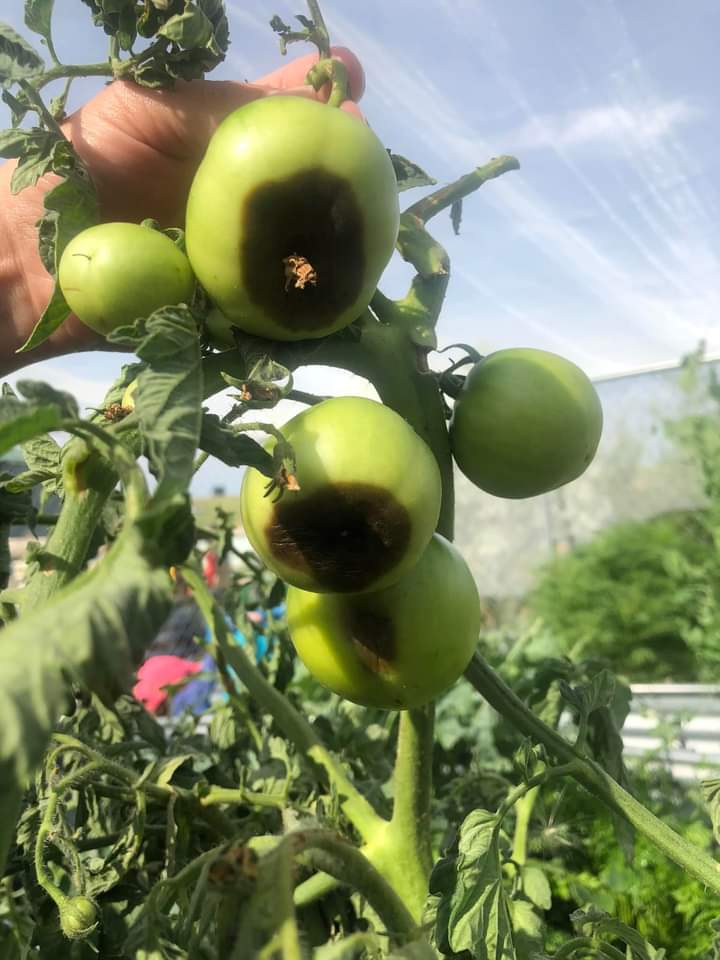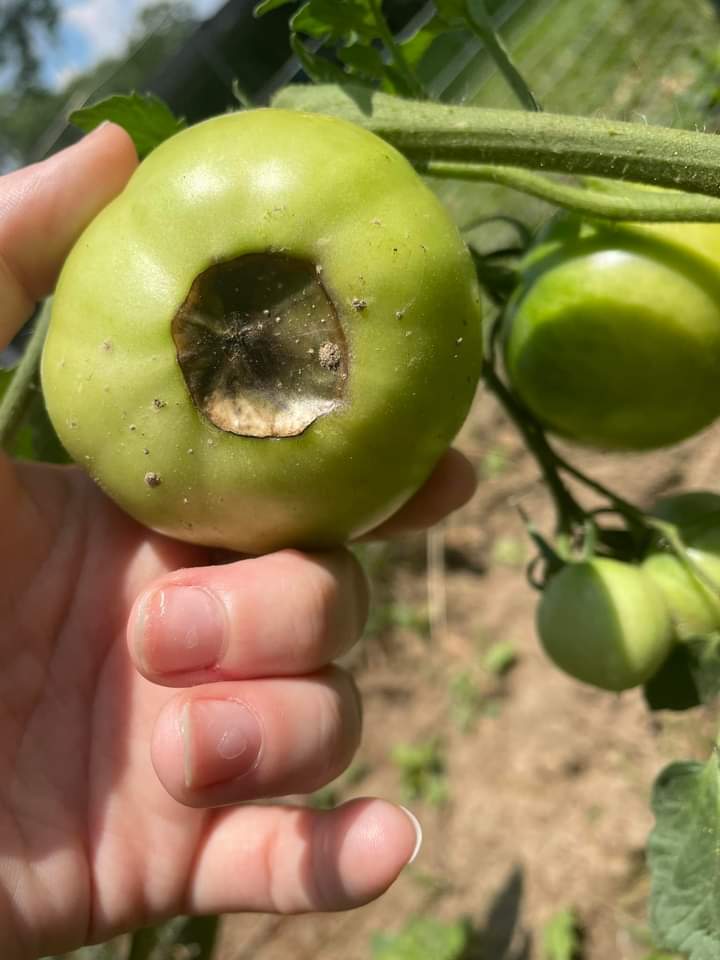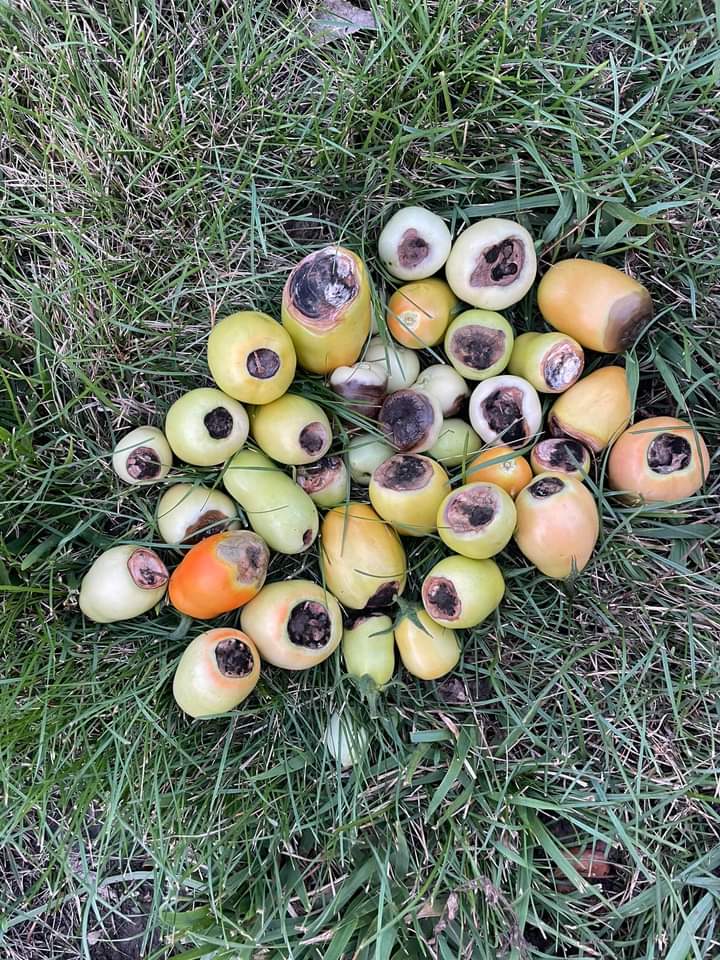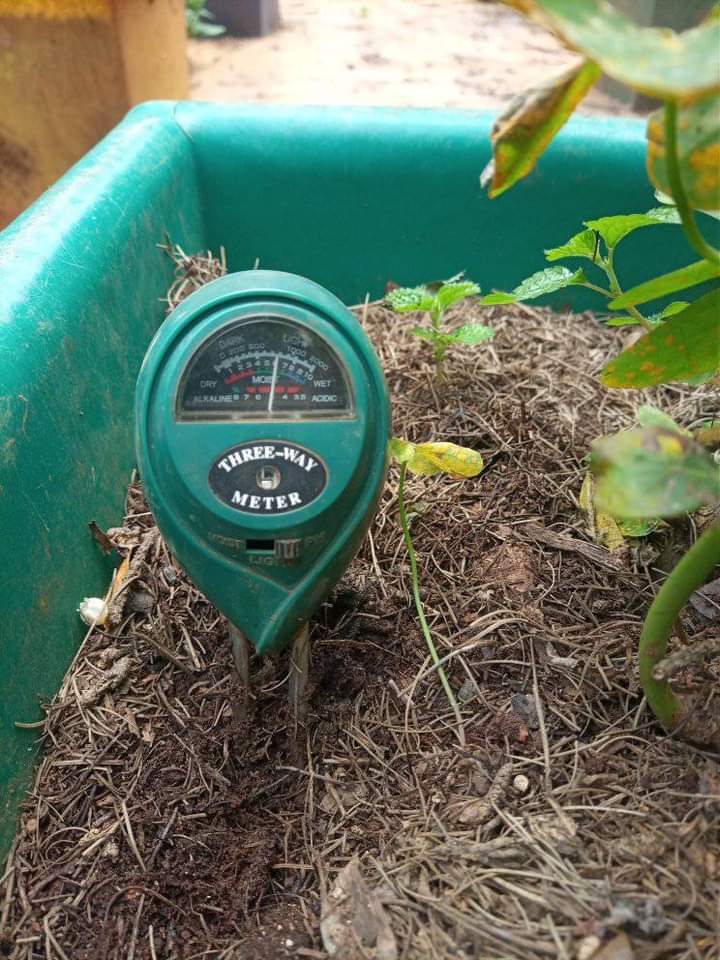
Hey there, fellow green thumbs! Are your potted tomatoes suffering from a case of rotting bottoms? Fear not, for we’ve got you covered with the ultimate guide to understanding the causes and cures of potted tomatoes rotting bottom . So, grab your gardening gloves, and let’s go into the root of the issue and find those solutions that’ll save your beloved tomatoes from doom!
This post may have affiliate links. This means that sometimes when you click a link on our site and make a purchase on Amazon, we may earn a small commission at no additional cost to you. We only recommend products we truly believe in, and your support helps keep us running!
Table of Contents
What is Potted Tomatoes Rotting Bottom, and Why Does It Happen?
Potted tomatoes rotting at the bottom, also known as blossom end rot, is a perplexing issue that plagues gardeners worldwide. The condition manifests as dark, sunken spots at the blossom end of the fruit, causing heartache for growers eager to reap the rewards of their hard work.
Causes of Potted Tomatoes Rotting Bottom

Ah, the mystery of the dreaded potted tomatoes rotting bottom! Let’s dig into the nitty-gritty and uncover the reasons behind this pesky problem.
Lack of Calcium Love
You see, calcium is the secret ingredient for strong tomato development. When your potted tomatoes don’t get enough of this vital mineral, their bottoms are the first to suffer. Calcium deficiency weakens the cell walls, making them more prone to rot.
Water Woes
Picture this – your tomatoes are thirsty, and then suddenly, they get a flood of water. Sounds like a recipe for disaster, right? Inconsistent watering, be it too much or too little, wreaks havoc on the calcium uptake, leading to the dreaded blossom end rot. Inconsistent watering is like a wild jive for your potted tomatoes, but it leads to nothing but bedlam and rotting bottoms. Steady and regular watering is the way to go, ensuring your tomatoes can absorb that vital calcium, stand tall, and steer clear of the pitfall known as bottom rot! Keep those watering cans in check, and your tomato plants will thank you with a bountiful and healthy harvest!
pH Party Gone Wrong
Soil pH levels can be quite the party pooper. If your soil swings too far to the acidic or alkaline side, it messes up the plant’s ability to absorb nutrients like calcium. Trust us, your tomatoes aren’t fans of this wild ride.
Missing Nutrient Squad
When the nutrient team isn’t complete, things get messy. Lack of essential minerals like magnesium, potassium, or phosphorus puts the tomatoes in a vulnerable spot, and guess where they pay the price? Yep, you got it – at the bottom.
So, there you have it! These culprits are the reasons behind the potted tomatoes’ bottom rot blues. We’re not leaving you hanging! Stay tuned for the cure guide to save those precious tomatoes from a bottomless pit of rot!
Cures for Potted Tomatoes Rotting Bottom

Now that we’ve identified the culprits behind this gardening woe, let’s show you the cures that’ll rescue your precious potted tomatoes!
Adequate Watering and Drainage
The secret to happy and thriving potted tomatoes lies in the art of watering and proper drainage. Let’s water those thirsty plants with some essential tips!
First things first – consistency is the name of the game. Keep a steady watering schedule for your potted tomatoes, providing them with a much-needed inch of water each week. Just like keeping your friends happy with regular hangouts, your tomatoes will appreciate the routine, and their roots will sing with joy!
But remember, balance is key! Overwatering can be as disastrous as forgetting to water altogether. So, don’t drown your poor tomatoes with excessive moisture. Give them enough, but not too much – just like finding the perfect pour for your morning coffee.
Now, let’s talk about drainage – the unsung hero of happy tomatoes. Good drainage is like having a safety net for your plants. Opt for well-draining containers that let excess water escape, so your tomatoes won’t end up with soggy feet. Nobody likes squishy toes, not even tomatoes!
For an extra layer of support, consider adding gravel to the bottom of the container. It’s like giving your tomatoes a cozy cushion to rest upon. This simple trick helps improve drainage and ensures that excess water doesn’t linger, preventing those pesky waterlogged roots.
Maintain Proper Soil pH

Testing the soil pH is like checking the mood of your tomato plants. Grab a trusty pH meter and give your soil a little nudge. Aim for a pH level slightly leaning towards the acidic side to neutral, somewhere between 6.5 to 7. It’s like finding the right balance between salty and sweet in a delectable dish!
Now, here’s the real trick – adjusting the pH. Think of it as a makeover for your soil, giving it the perfect glow-up! If your pH test reveals the soil is way too acidic or too alkaline, don’t fret. You have the power to fine-tune it!
Bring in the organic amendments and soil conditioners, like a team of skilled artists creating a masterpiece. These marvelous helpers will work their magic and adjust the pH to create the perfect growing environment for your tomatoes.
Just like tuning a musical instrument, getting that soil pH in the right range will make your tomatoes sing with happiness! They’ll soak up the nutrients they need, thrive, and reward you with juicy, succulent fruits.
Supplement with Calcium
When it comes to safeguarding your potted tomatoes from the dreaded blossom end rot, it’s all about boosting those calcium levels. Let’s explore some fantastic natural remedies that’ll do the trick!
Imagine calcium as the superhero swooping in to save the day. But wait, it’s not in a flashy cape; it’s hidden within crushed eggshells, bone meal, and powdered oyster shells – nature’s very own calcium powerhouses!
So, here’s the plan – sprinkle some crushed eggshells around your tomato plants, like magical fairy dust. These calcium-rich wonders will gradually release their goodness into the soil, nourishing your tomatoes with all the strength they need.
But that’s not all – bone meal is like a secret weapon in your gardening arsenal. Sprinkle it around the base of your tomato plants, and watch the calcium magic unfold. Your tomatoes will be stronger than ever, ready to face whatever challenges come their way.
And let’s not forget about the powdered oyster shells – they’re like hidden treasures for your soil! These shells not only boost calcium levels but also provide essential minerals for your tomato plants to flourish.
With these natural remedies in play, your potted tomatoes will be fortified against calcium deficiency, and blossom end rot will be kept at bay. Just like superheroes protecting their city, these calcium-boosters will ensure your tomatoes stand tall and healthy.
Balanced Nutrition
Just like a balanced diet for us humans, these fertilizers provide all the necessary nutrients for your potted tomatoes to thrive. Nitrogen, phosphorus, potassium, and more – it’s like a symphony of nutrients playing in harmony, nourishing your plants from roots to leaves.
Now, here’s the trick – make sure these fertilizers are specially formulated for tomatoes. It’s like customizing a menu tailored to your tomato’s taste buds! Look for those magic words “for tomatoes” on the label, and your plants will thank you with their vibrant, luscious growth.
So, when it comes to feeding your potted tomatoes, don’t settle for fast food – give them the gourmet treatment with high-quality organic fertilizers. They’ll soak up the goodness, grow tall and strong, and produce a harvest that’ll make your heart skip a beat.
With balanced nutrition on the menu, your tomatoes will be the stars of the garden, impressing everyone with their health and vigor. Say goodbye to weak, undernourished plants, and hello to a thriving tomato paradise!
Conclusion:
Congratulations! You’ve now armed yourself with the knowledge needed to combat the notorious “Potted Tomatoes Rotting Bottom” issue. Understanding the causes and implementing the cures, you can safeguard your potted tomatoes and ensure a bumper crop of juicy, ripe fruits. Gardening is a journey of trial and error, so stay patient and keep experimenting until you find the perfect formula for thriving potted tomatoes.
